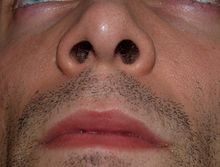What is Epistaxis?
The nostrils are the channels of the nose. It is here where Nosebleed or Epistaxis (Greek term) meaning “to drip” blood usually drains out. Nosebleed is a common type of hemorrhage. It is usually benign as in the anterior type and may also be life-threatening as the posterior type. The two types of Epistaxis: The Anterior type which is the common form and the dreadful Posterior type usually records to an estimated 1 in a population of 60%. Hospitalization due to Epistaxis is recorded at 1.6 in 10,000.In most cases, Nosebleed is common to children age 10 and below. The decreased in climate humidity causing the drying of the nasal mucosa often results to nosebleed. Not only is climate the leading cause of nosebleed, other major causes include inhaled medications, granulomatous disease, severe blow on the face, the head, and nasal trauma.
What is Anterior Nosebleed?
Anterior nosebleed usually occur 90% of nosebleed cases. Bleeding usually comes from the front part of the nose. It is usually the result of injury to the nose or the drying of the nasal membranes. The sight of the oozing blood is sometimes scary but should not be a cause for alarm. The Anterior type of nosebleed is still less severe. The bleeding can easily be traced using a headlight and adequate suction. Typically, anterior nosebleed originates from the Kiesselbach plexus. Bleeding is nonmassive and steady.
What is Posterior Nosebleed?
Posterior nosebleed is the dreaded type and can be fatal if left unattended. This type of nosebleed is considered as one of the symptoms of high blood pressure. Other major causes are severe blow on the face, the head, and nose injury and abuse in cocaine. The bleeding is not easily trace because blood is thought to be oozing down the back of the throat. The flow of blood which is down the back of the throat makes assessment of blood loss difficult. The risk of choking is inevitable because the bleeding comes out from the middle turbinate where the entry of the spenopalatine artery posterior is found. This type of nosebleed usually strike in elderly people where the vessels and the posterior arteries become hardened and usually break.


No comments:
Post a Comment